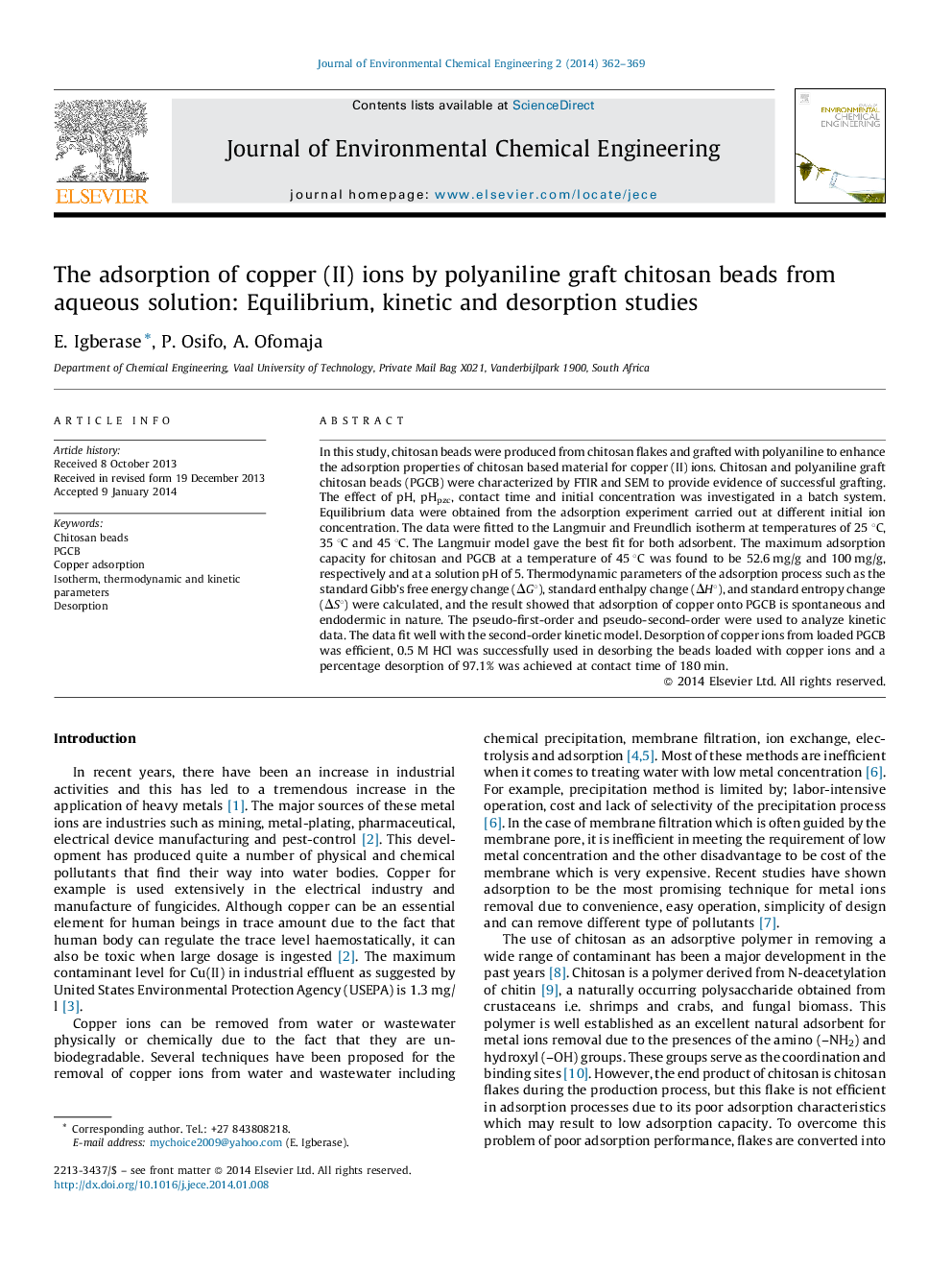| Article ID | Journal | Published Year | Pages | File Type |
|---|---|---|---|---|
| 222151 | Journal of Environmental Chemical Engineering | 2014 | 8 Pages |
•Conversion of chitosan flakes to beads and grafting of the beads.•Characterization of the raw and modified beads using analytical methods such as FTIR and SEM.•Determination of equilibrium and kinetic parameters of the modified beads.•Using the copper loaded modified beads in desorption studies.
In this study, chitosan beads were produced from chitosan flakes and grafted with polyaniline to enhance the adsorption properties of chitosan based material for copper (II) ions. Chitosan and polyaniline graft chitosan beads (PGCB) were characterized by FTIR and SEM to provide evidence of successful grafting. The effect of pH, pHpzc, contact time and initial concentration was investigated in a batch system. Equilibrium data were obtained from the adsorption experiment carried out at different initial ion concentration. The data were fitted to the Langmuir and Freundlich isotherm at temperatures of 25 °C, 35 °C and 45 °C. The Langmuir model gave the best fit for both adsorbent. The maximum adsorption capacity for chitosan and PGCB at a temperature of 45 °C was found to be 52.6 mg/g and 100 mg/g, respectively and at a solution pH of 5. Thermodynamic parameters of the adsorption process such as the standard Gibb's free energy change (ΔG°), standard enthalpy change (ΔH°), and standard entropy change (ΔS°) were calculated, and the result showed that adsorption of copper onto PGCB is spontaneous and endodermic in nature. The pseudo-first-order and pseudo-second-order were used to analyze kinetic data. The data fit well with the second-order kinetic model. Desorption of copper ions from loaded PGCB was efficient, 0.5 M HCl was successfully used in desorbing the beads loaded with copper ions and a percentage desorption of 97.1% was achieved at contact time of 180 min.
Graphical abstractSet-up for the production of chitosan beads.Figure optionsDownload full-size imageDownload as PowerPoint slide
